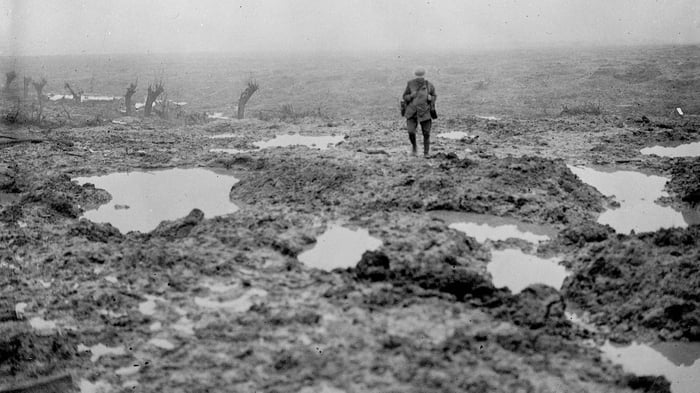
THE FIGHTING QUINNS
Image: Canadian soldier in the mud of Passchendaele, which became a symbol for the horrific conditions under which British Empire forces fought.
During the Great War the city of Ypres formed part of a jagged bulge of allied defences extending from France north into Belgium. These crucial series of defensive positions hugged the Franco-Belgian coastline and provided a protective buffer for the vital channel ports linking England and France. The Third Battle of Ypres (11 July 1917 - 10 November 1917) was launched in order to capture a series of ridges near the city.
The last ridge east of Ypres borders the village of Passchendaele, a name made famous by the heroism of Australian soldiers. Despite divisions in the British war cabinet and opposition from leading French generals, the British decided to attack instead of awaiting the imminent arrival of American forces.
Kathleen Briggs provided us with a story of her family, the fighting Quinns of Passchendaele:
"In November 1916, The Sydney Mail newspaper published a photograph of five Australian servicemen who were part of the Great War allied forces’ offensive in Europe. They were Thomas, William, Dennis, Timothy and Michael Quinn, five brothers from the Upper Hunter town of Scone, who became known as The Fighting Quinns. Mick, Tim and Dennis Quinn enlisted in Scone in February 1916. They sailed three months after completing basic training, once arriving in France and the Western Front they joined William and eldest brother Tom. Mick had been promoted to Corporal by October 14, 1917, he received multiple gunshot wounds to the head and chest during the Battle of Ypres. He died four days later, aged just 19, and was buried with 148 other Australian 3rd Division infantry soldiers in Nine Elms British Cemetery outside the Belgium town of Poperinghe. These brave men were my grandfather (William) and my great-uncles."
The Third Battle of Ypres lasted three months, the gallantry of the Australian Imperial Force and Canadian Expeditionary Force and the sacrifice of at least 200,000 (lowest casualty estimate) allied troops achieved little. Though the last ridge at Passchendaele was captured by the efforts of the Canadians, the wider Ypres offensive only achieved an inconclusive result.













